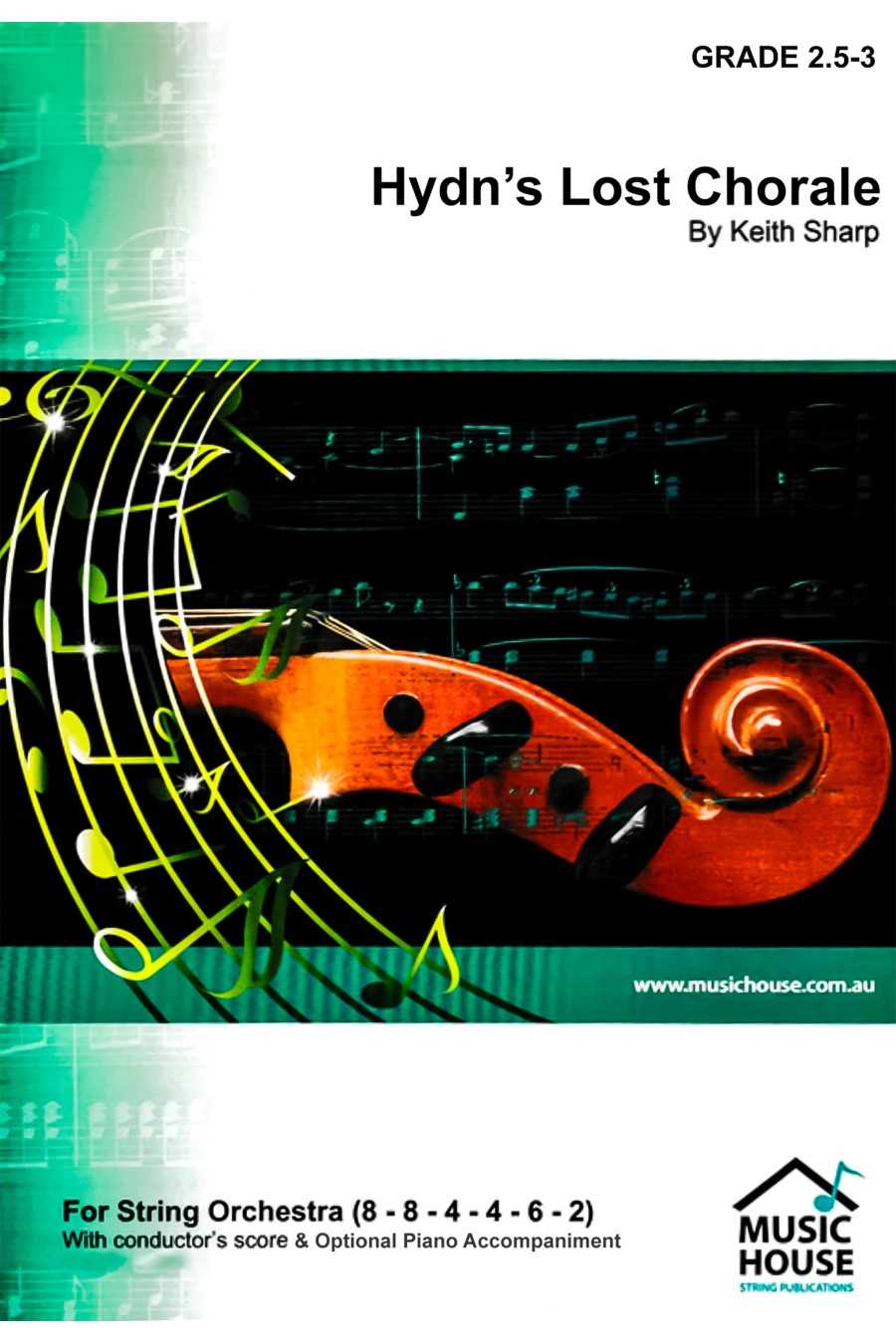

Haydn’s Lost Chorale is a revised version of The Abbey, inspired by Haydn’s St. Anthony’s Chorale. It’s scored for string orchestra with optional piano, including violin 3 (treble viola) and violin parts. It features a dotted rhythm, quasi-classical textures and singing themes.
Keith Sharp earned a Bachelor of Music degree in 1984. He's been a string educator in Brisbane since then, creating award-winning programs and compositions. His works are popular in Australia and internationally. Keith is also a clinician, guest conductor, and guest lecturer.
Haydn’s Lost Chorale is a musical piece written for a string orchestra that includes violin 3 (treble viola), violin, and an optional piano accompaniment. Haydn’s St. Anthony’s Chorale inspires this composition and features a revised version of The Abbey. It consists of a dotted rhythm and quasi-classical textures and includes singing themes.
Here is the composer’s introduction to the title:
“At last, the end of my quest was near! Surely the hidden crypt was within metres? Crawling through a slimy, cobwebbed, rat-infested tunnel, the growing sense of anticipation was overwhelming. An intriguing mystery was about to be solved. Would the infamous parchment still remain within the monk’s, by now skeletal, grasp? Its discovery would confirm my suspicion - Brother Festus was guilty of stealing the coveted choral extract from the great master Haydn, nearly 200 years ago! There was a chance that Haydn’s “lost chorale” may finally be heard…..” (Diary extract - Summer holiday adventures, 1994).
Keith Sharp earned a Bachelor of Music degree in 1984. He's been a string educator in Brisbane since then, creating award-winning programs and compositions. His works are popular in Australia and internationally. Keith is also a clinician, guest conductor, and guest lecturer.
Designed as a first concert piece for beginners, this enduring favourite (released in 1968) limits rhythms to nothing shorter than a quarter note, includes no slurs, provides ample bowing reminders, and may even be performed minus basses without sacrificing musical integrity. The percussion part for wood block, however, must be used since its steady quarter-note pulse represents the sound of a metronome.
Chicken Licken by Chirs Allen for grades 4-6. Pub. Spartan Press.